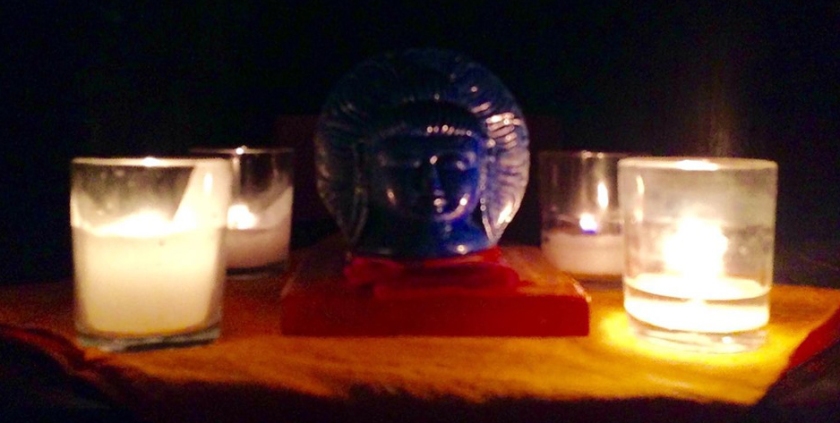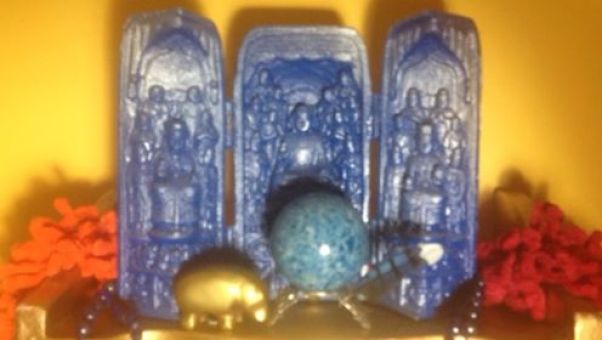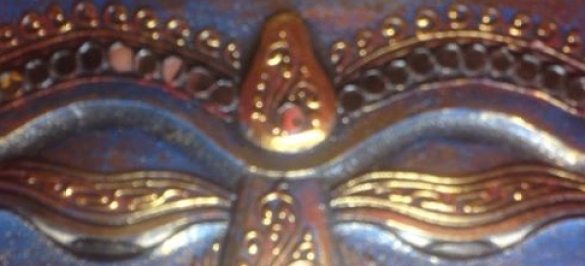
Bhakti – The Most Sacred Love
Bhakti is to love for love’s sake and surrender to Divinity. “Bhaj” is to adore or worship God. The beautiful indescribable path of devotion cultivates a transformative peace, stability of mind, strength and inspirational bliss. Bhakti is much more than singing or chanting the Holy names. There are countless forms of bhakti. Let’s take a look at nine types of devotional sadhana: sravaṇa, smarana, arcana, vandana, pada sevana, dasya, sakhya, kirtana and atma nivedana.
Sravaṇa is listening to the scriptural stories, attending satsang or hearing messages from a true guru. Smaraṇa is the process of remembering or fixing one’s mind onto divinity. Often this involves memorizing sacred literature or mantra. The mind becomes purified of vitiations during smarana as it is immersed in sacredness. A third form of bhakti is arcana, which is the worshiping of an image of Divinity. Arcana may involve murtis, yantras, mental images or creating sacred art. Vandana is paying homage and kīrtana is group praise of Godhead, often through ecstatic song and dance. I’ll never forget the time I attended a church around the corner from my Mom’s house when I was about 7 years old. They were hollering, clapping, weeping, dancing and rolling on the ground in devotion. The incredible energy overwhelmed me with tears and I found a new sense of hope and connection.
Another form of bhakti is atma nivedana when a person completely surrenders their life actions to the Supreme. This is also compared to the concept of isvara pranidhana in the eight limbs of yoga. Imagine a life lived in constant sincere aspiration to experience God through meditation and every mundane action. Bhakti is a path with so many other nuances when approached through pada sevana, dasya and sakhya. Pada sevana is the rendering seva, the selfless giving to other people, animals or nature in the form of donations, time, assistance and knowledge. Even our basic activities of daily living such as cooking, cleaning and self care can be offerings when the mind connected in union. Dasya is servitude and sakhya is friendship. To lovingly serve and show compassion reflects the recognition that God is in all beings.
“Those who seek shelter in Me, O Arjuna, are of four types: Those who are in distress; those who seek understanding; those who seek power;
and those who are wise.”
–Bhagavad Gita 7:16
The Bhagavad Gita verse eloquently describes four different motives for bhakti. Either something is wrong or a person is seeking answers to questions. Another reason for bhakti is to obtain boons, siddhis or empowerments. However, the purest form of bhakti is done out of pure love. When prayer, song, art, dance, service, intentions and the fruits of labor are offered to God, a person becomes free of bondage. Sing like a child. Dance like the wind. Create a life that reflects the love of God emanating through you.
“Those who, with minds fixed on Me, are ever united to Me in pure devotion, are in My eyes the best versed in yoga. Those, however, who aspire to the Indestructible, in Indescribable, the Unmanifested, the All-Pervading, the Incomprehensible, the Immutable above all vibration, who have subjugated the senses, are even-minded, and devote themselves to the well-being of all – verily, they, too attain Me.” – Bhagavad Gita 12.3-4
The Dharma Warrior will be hosting a podcast with Christie Smirl (Kalavati Devi) on bhakti and taking a look into her sacred art and music. Also, if you want a deeper look into Bhakti Yoga as described in the Bhagavad Gita, enjoy this one hour video segment from the exclusive Healthier Vibrations online series with Craig Williams, LAC.

“All souls should blossom like flowers and radiate positive fragrance, delight and joy to their surroundings.” ~ Sri Sri Adishakti Maa
Join the Dharma Warrior and the lovely Dr. Christie Smirl for the latest Installment of the “Yoga : Life Transformation Beyond Fitness” Series on the DWTV Podcast Episode #6: “Bhakti: The Most Sacred Love”!



